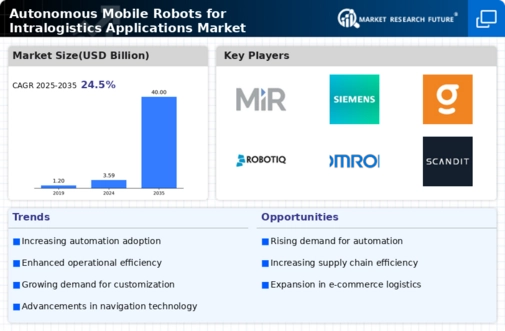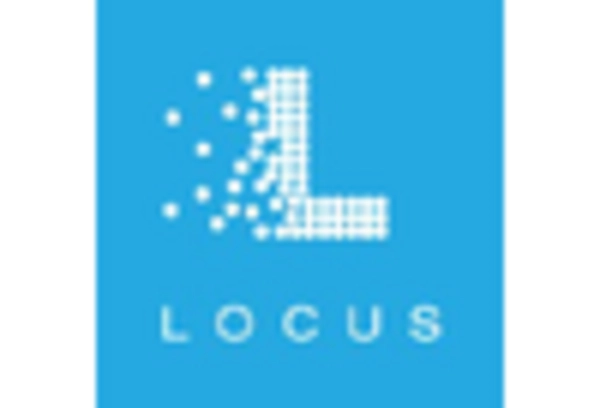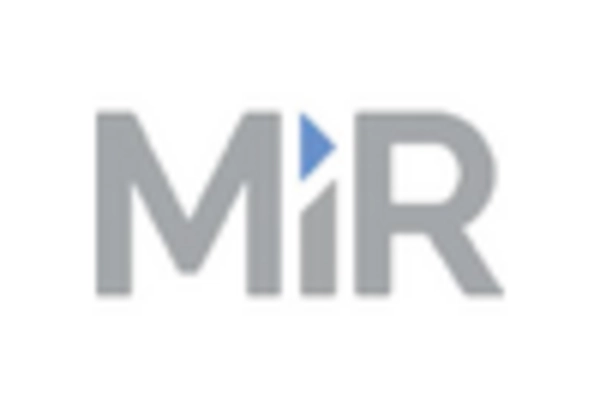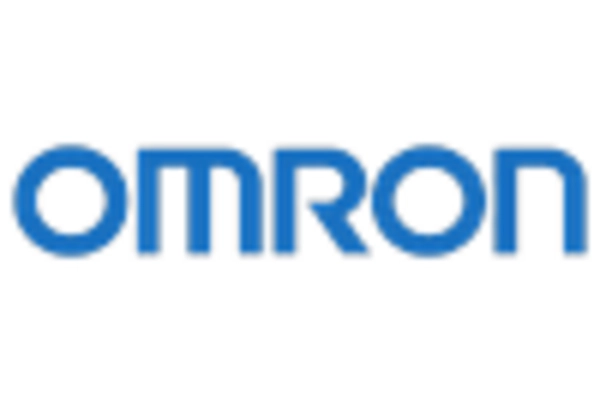Rising Demand for Efficiency
The Autonomous Mobile Robots for Intralogistics Applications Market is experiencing a surge in demand for enhanced operational efficiency. Companies are increasingly seeking solutions that can streamline their supply chain processes, reduce labor costs, and minimize human error. As organizations strive to optimize their logistics operations, the integration of autonomous mobile robots has become a pivotal strategy. According to recent estimates, the market for these robots is projected to grow significantly, with a compound annual growth rate of over 20% anticipated in the coming years. This growth is driven by the need for faster and more reliable logistics solutions, which autonomous mobile robots can provide, thereby transforming traditional warehousing and distribution practices.
Technological Innovations in Robotics
The Autonomous Mobile Robots for Intralogistics Applications Market is significantly shaped by ongoing technological innovations in robotics. Advancements in artificial intelligence, machine learning, and sensor technologies are enhancing the capabilities of autonomous mobile robots, making them more efficient and reliable. These innovations enable robots to navigate complex environments, avoid obstacles, and perform tasks with greater precision. As a result, businesses are increasingly adopting these advanced robotic solutions to improve their logistics operations. The market is projected to witness substantial growth, with technological advancements playing a crucial role in driving the adoption of autonomous mobile robots across various industries.
Labor Shortages and Workforce Challenges
The Autonomous Mobile Robots for Intralogistics Applications Market is increasingly influenced by labor shortages and workforce challenges. Many sectors are facing difficulties in recruiting and retaining skilled labor, which has prompted organizations to explore automation as a viable solution. Autonomous mobile robots offer a way to alleviate these challenges by taking over repetitive and labor-intensive tasks, allowing human workers to focus on more complex activities. This shift not only enhances productivity but also addresses the growing concern of labor availability. As companies adapt to these workforce dynamics, the demand for autonomous mobile robots is expected to rise, further solidifying their role in modern intralogistics.
E-commerce Growth and Demand for Fast Delivery
The Autonomous Mobile Robots for Intralogistics Applications Market is closely linked to the rapid growth of e-commerce and the escalating demand for fast delivery services. As online shopping continues to gain traction, logistics providers are under pressure to enhance their fulfillment capabilities. Autonomous mobile robots can significantly improve the speed and efficiency of order processing and delivery within warehouses. This capability is particularly vital in meeting consumer expectations for quick turnaround times. The market is expected to expand as e-commerce companies increasingly invest in automation technologies to streamline their operations and maintain a competitive edge in the fast-paced retail environment.
Focus on Cost Reduction and Operational Optimization
The Autonomous Mobile Robots for Intralogistics Applications Market is driven by a strong focus on cost reduction and operational optimization. Organizations are continually seeking ways to lower operational expenses while maximizing productivity. Autonomous mobile robots present a compelling solution by reducing labor costs and increasing throughput in logistics operations. By automating repetitive tasks, these robots can operate around the clock, leading to significant efficiency gains. As businesses recognize the financial benefits of integrating autonomous mobile robots into their supply chains, the market is poised for growth, with many companies prioritizing automation as a key strategy for achieving their operational goals.

















Leave a Comment